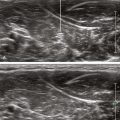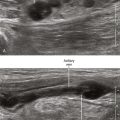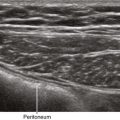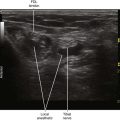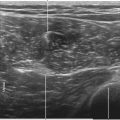34 Forearm Blocks
Peripheral blocks of terminal branches of the brachial plexus (median, radial, and ulnar nerves) can offer benefits in terms of patient disposition.1,2 These procedures can be used to prevent and treat postoperative pain. Ultrasound-guided nerve blocks of the radial, ulnar, and median nerves are also useful in the emergency department to provide anesthesia for hand procedures.3
1 Gebhard RE, Al-Samsam T, Greger J, et al. Distal nerve blocks at the wrist for outpatient carpal tunnel surgery offer intraoperative cardiovascular stability and reduce discharge time. Anesth Analg. 2002;95:351–355.
2 Gray AT, Schafhalter-Zoppoth I. Ultrasound guidance for ulnar nerve block in the forearm. Reg Anesth Pain Med. 2003;28:335–339.
3 Liebmann O, Price D, Mills C, et al. Feasibility of forearm ultrasonography-guided nerve blocks of the radial, ulnar, and median nerves for hand procedures in the emergency department. Ann Emerg Med. 2006;48:558–562.

